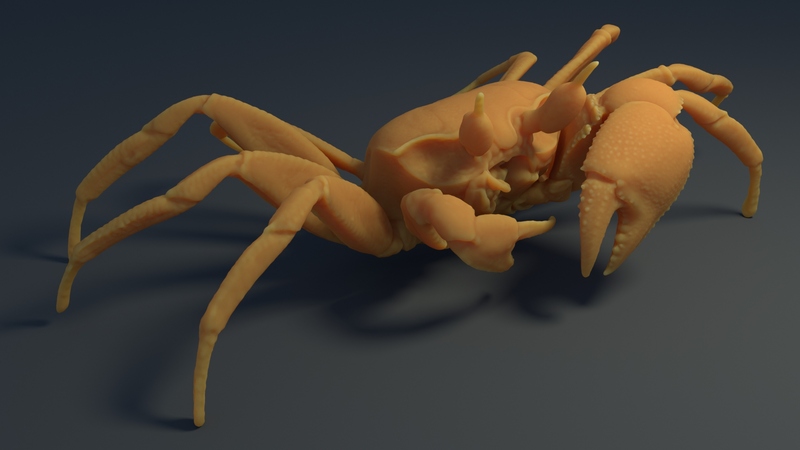Dispersión subsuperficial (SSS)

The Subsurface Scattering node is used to add simple subsurface multiple scattering, for materials such as skin, wax, marble, milk and others. For these materials, rather than light being reflect directly off the surface, it will penetrate the surface and bounce around internally before getting absorbed or leaving the surface at a nearby point.
How far the color scatters on average can be configured per RGB color channel. For example, for skin, red colors scatter further, which gives distinctive red-colored shadows, and a soft appearance.
Entradas
- Color
Color of the surface, or physically speaking, the probability that light is reflected for each wavelength.
- Escala
Global scale factor for the scattering radius.
- Radio
Distancia promedio que la luz atravesará por debajo de la superficie. Una radio mayor producirá una apariencia más suave, debido a que la luz se esparcirá hacia las sombras y a través del objeto. La distancia de dispersión se especifica de forma separada para cada canal RVA, para posibilitar recrear materiales tales como piel, en los cuales la luz roja se dispersa más que los otros componentes. Los valores X, Y y Z serán mapeados respectivamente a los valores de R, V y A.
- sólo en Cycles
Index of refraction for Subsurface Scattering.
- Anisotropy Cycles Only
Controls the directionality of subsurface scattering.
- Normal
Normal used for shading; if nothing is connected the default shading normal is used.
Propiedades
- Subsurface Method
Métodos de procesamiento para simular la transluminiscencia.
Nota
EEVEE does not support the Random Walk methods.
- Christensen-Burley:
Una aproximación a una dispersión volumétrica basada en principios físicos. Este método es menos preciso que Camino aleatorio, sin embargo en algunas situaciones producirá menos ruido en menos tiempo.
- Random Walk (Fixed Radius):
Provides accurate results for thin and curved objects. Random Walk uses true volumetric scattering inside the mesh, which means that it works best for closed meshes. Overlapping faces and holes in the mesh can cause problems.
- Camino aleatorio:
Behaves similarly to Random Walk (Fixed Radius) but modulates the Radius based on the Color, Anisotropy, and IOR. This method thereby attempts to retain greater surface detail and color than Random Walk (Fixed Radius).
Salidas
- BSSRDF
BSSRDF shader output.
Ejemplos

Random walk subsurface scattering.